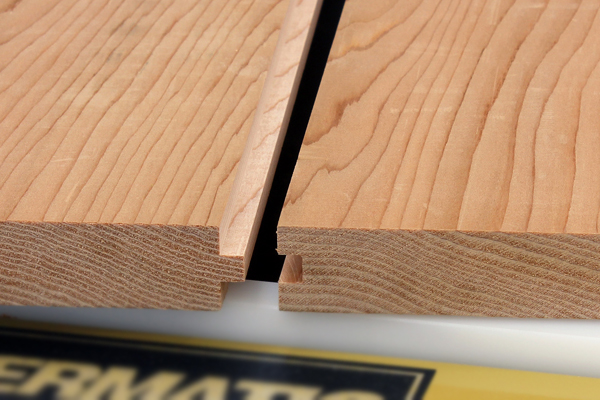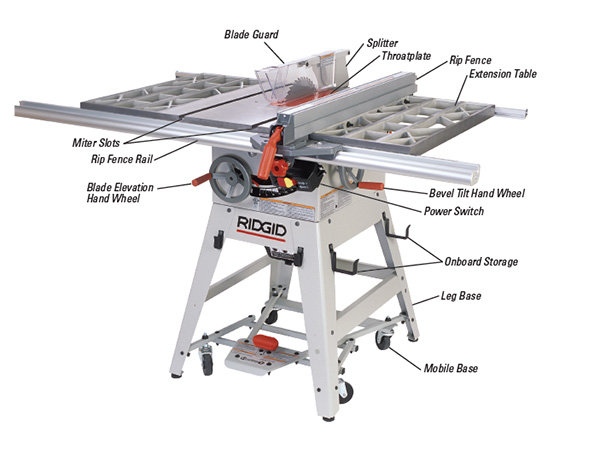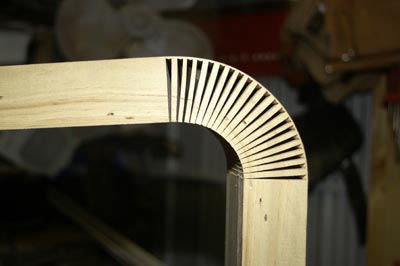Table Saw Miter Slot Guide
This article is from Issue 19 of Woodcraft Magazine.
The right accessories can take your number one tool, and your woodworking, to the next level. Learn which ones make the cut, and how they can work for you.
Download files and build them with your 3D printer, laser cutter, or CNC. Thingiverse is a universe of things. Table Saw Miter Gauge & 3/4 x 3/8 bar Delta Craftsman Many others Vintage Steel. 8' Craftsman 113.27580 113.22401 Table Saw Miter Gauge W/3/4' W x 3/8' D Slot. Larry's right, due to the design of the saw, SMT and rip fence adjust to the blade, not adjusting the blade to the table/miter slot (which is why the saw is so reasonably priced). So only in the rare instance the blade lines up perfectly to the table will this work well. Traditional miter bars develop play in the miter slot and can affect the accuracy of your cuts. The ZEROPLAY system instantly fill the full width of the miter slot for no side-to-side play. The material will not warp or swell with changing condition like wood runners so your cuts stay precise. This rigid aluminum runner conveniently adjusts from the TOP for perfect sliding action in any standard 3/4' x 3/8' miter gauge slot. Won't warp, shrink, or swell like wooden runners. Adjustment range fits slots measuring 0.740' - 0.760' wide. A simple turn of a screw adjusts Miter Slider for ZERO sideplay.
Whether it’s fresh out of its box, or has a few miles under its drive belt, your table saw might seem to make most cuts, well, good enough. But what you may not yet realize is that it can do soooo much more. Many woodworkers don’t know that table saws, like other shop tools, are supposed to be tinkered with and improved.
Of course, your choices of accessories and upgrades hinge on the work you want to do, and the accuracy you want to achieve. Knowing the best of what’s available can help.
Following is our list of the 15 top accessories and upgrades to turn almost any table saw from naughty to nice...really nice. We’ll also show items you might not have seen (and a few you’ve forgotten about), explain how they work, and discuss why you need them in your shop.
Safety First
Woodworkers love swapping scar stories. The best end with a near miss, the worst, with 9-1-1. Sadly, most admit that their mishaps could have been avoided with a little common sense and/or a few extra pieces of safety gear. For a few bucks, you can help a friend, or yourself, maintain membership in the “10-Finger Club” and ensure that more time’s spent in the shop, instead of the emergency room.

1 Five Piece Safety Set
Why you need it: This affordable “starter set” makes a smart buy for new table saw owners and experienced craftsmen alike. If you don’t know the exact location of each of these items in your shop, it’s time to buy some back-ups. A fully-equipped shop can benefit from a few well-placed extras. Keeping the right gear next to each machine saves time and eliminates the temptation of you putting your fingers too close to a blade in order to save a few seconds. Even if you choose to use pricier equipment, you might want to switch to a less-expensive spare when making a potentially-sacrificial cut…there are times when a little blade- or bit-contact is unavoidable.
2 Grip-Tite Featherboard
Why you need it: Featherboards serve as an extra set of hands where fingers should never go. Mesa Vista Design’s Grip-Tites do just that. Using a super-strong magnet, this jig stays in place better than simpler, clamp-in-place solutions, but the cam release makes them easy to remove and reposition. (You’ll probably find yourself “repositioning” this jig onto the other cast-iron or steel tables in your shop, such as your bandsaw or jointer.)
Note: Magnets don’t stick to aluminum or wood. Grip-Tite offers 36” and 42” long steel fence plates that can be screwed onto your existing fence. Additionally, they sell table saw fence clamps you can use to make an easy-to-remove metal fence, or a sacrificial plywood subfence for cutting rabbets with your dado blade.
3 Safety Power Switch
Why you need it: When a board starts to stick between the blade and fence, you need a way to quickly turn off the saw without shifting your attention from the cut, or letting go of your stock. A safety, or “kill,” switch makes it easy to turn off your saw with just a bump. Even when kickback isn’t a problem, you’ll find that the ability to keep your hands on your stock as the blade comes to a stop can lead to better-looking cuts. Not needing to worry about the threat of a slowing blade glancing against—or grabbing—the board eliminates the need to push long boards completely off the table and onto your floor.

Miter Guide For Table Saw
HOOD AND UNDER-THE-HOOD UPGRADES
It’s nice to dream about building your dream shop around a cabinet saw, but in reality, many small-shop woodworkers are better off with a contractor saw. That’s because in terms of mobility, reliability, and affordability it’s tough to beat. These upgrades might not look like much, but they can minimize some small-saw shortcomings and help you take full advantage of all your saw can offer.
4 TopSaver Kit
Show me a woodworker who has everything, and I’ll show you a guy who’s got rust. He’ll appreciate this slick stocking stuffer. The $20 TopSaver kit contains an 8oz. pump bottle, two non-woven abrasive pads, two disposable cloths, and a pair of disposable gloves...everything needed for an hour or two of rust-management. The neat thing about this product is that once it’s sprayed on and buffed off, you won’t need to repeat the process for a long while.
More than just a de-ruster, TopSaver cleans and seals the surface. Somehow, this waterless formula sinks into the open pores of the metal, creating a protective barrier that repels moisture and reduces friction. The surface feels freshly waxed; however, the treatment lasts a lot longer. For obvious reasons, the secret ingredients aren’t listed on the label, but the manufacturer states that the product doesn’t contain oils, silicones, or other chemicals that might stain the wood or interfere with glues or finishes.
5 Power Twist Link Belt
Why you need it: In time, old-style V-belts stiffen and develop “bumps.” When this happens, your saw may seem underpowered, or produce ragged-looking cuts, even when carefully tuned. In the worst instances, your saw may start bouncing around. (As a test, detach the old drive belt and start the tool. If the motor runs quietly by itself, the problem is probably with your belt.) Twist-together urethane elastomer/woven polyester links (aka Power Twists) do not have a “memory” like V-belts, so they won’t deform, even if you don’t use the machine for months. Additionally, since each link moves independently, the belt stays flexible and absorbs minor vibration, which can help your saw sound and perform more smoothly.
6 Mobile Base
Why you need it: If you’re working in a small shop, you’ll need to move your saw around. (When sawing sheet goods, you’ll need 8-’ of clearance on the infeed and outfeed ends. If you’re using a crosscut sled, you may also need that much space on both sides.) A mobile base will enable you to wheel your saw out when and where it’s needed, and roll it out of the way when it’s not. The base shown here is a smart choice because it includes locking wheels to ensure that your saw stays in place while you’re making your cuts, and the adjustable feet enable you to make the machine stable even if the floor isn’t perfectly flat..
7 Contractor's Saw Dust Collector
Why you need it: If you’re tired of dragging out a broom, or tracking sawdust in the house every time you make a few cuts, this one’s for you. Simply stick the Velcro strips onto the base of your saw, then attach the cloth pouch. If you roll your saw around a lot, use the pouch in basic “collection” mode for 80% efficiency. When you plan to make piles of sawdust, switch the bag to “funnel” mode and connect it to your shop vac. When used with a vacuum, the $40 shop solution offers over 90% efficiency; about the same as a full-blown two-stage dust collector costing hundreds of dollars more.

blades (AND OTHER AD-ONS) FOR BETTER CUTS
In the end, all that really matters happens right where the blade meets the board. The blade plays a major role, but realize that it’s just a part of the show. A few supporting actors can help your blade deliver even cleaner cuts. Pay close attention to model numbers; make sure that the accessories fit your saw and work with the other upgrades you choose.
8 Zero-clearance Insert
Miter Slot Slides
Why you need it: LEECRAFT inserts are precisely machined phenolic plugs designed to replace the metal throat plates that come with most saws. Unlike the gaping-wide metal plates, these blanks are slotted by your sawblade to make a “zero-clearance” fit. A tighter-fitting throat plate reduces tear-out, improves dust collection, and eliminates that gap where small chunks of wood sometimes fall and then come hurtling back at you. You can make your own insert, but if you haven’t, buy one that’s ready-made and see what you’re missing.
9 Aftermarket Splitter
Why you need it: A well-thought out element on high-end saws, a splitter works like a rudder, preventing boards from sliding sideways, or squeezing in on the back edge of the blade (either instance can lead to burnt edges, or dangerous kickback). Such is not the case with all machines. Unfortunately, most woodworkers remove their splitters because they’re hard to adjust and a pain to remove when making cuts that aren’t completely through. If this sounds like you, check out the MJ splitter. This small, polycarbonate “chip” is easy to attach to (and detach from) any zero-clearance insert. Used when your blade is set at 90°, it helps steer boards for smoother, safer cuts.
10 Top-notch Sawblade
Why you need it: Most woodworkers will agree that buying the best blade you can afford is a smart investment. While you can get very good performance from a less expensive blade, Forrest alternate top bevel (ATB) blades have set the benchmark for super-clean rips and chip-free crosscuts in all types of materials. The super-hard carbide will slice hundreds of board feet; when it starts to dull, Forrest can resharpen your blade to its original specs for like-new performance.
11 Easy-to-adjust Dado Blade
Why you need it: The ability to cut rabbets, dados, and grooves makes dado blades a cabinetmaker’s best friend. Along with a good combination blade, a good dado set is the second smartest investment you can make. Freud’s dial-a-dado costs more than Freud’s standard 8” stacked dado set, but after spending an afternoon or cutting test grooves and shuffling shims, you’ll appreciate the convenience. The fine-tuning wheel offers .004” click increments to quickly and easily tweak the fit of a groove.
Table Saw Miter Slot Rails
UPGRADES FOR AMAZING ACCURACY
There’s more in store for your saw than just 45° and 90°. These two jigs will enable you to quickly, consistently, and accurately cut miters and bevels to a degree of precision you might not have thought possible with your garden-variety saw.
12 Incra MIter Gauge V27
Table Saw Miter Slot Guides

Why you need it: It’s tough to cut miters accurately when the bar wiggles in its slot, or the degrees imprinted on the head are 2° thick. Stepping up to an aftermarket gauge, such as the Incra v27 can help. The miter bar employs four expansion disks that eliminate any side-to-side play in your saw’s miter slot. Laser-cut V-stops ensure that you’re cutting the miter you’re after and can repeat the cut days later. Additionally, the universal mounting bracket on this gauge’s vertical fence allows you to add a store-bought or shop-made auxiliary fence for cutting boards to consistent lengths. Like other accessories, you can use this upgrade with any miter-slotted machine, such as your bandsaw, belt sander, or router table.
13 Wixey Digital Angle Gauge

Why you need it: Why you need it: Before this pint-sized gauge hit the market, cutting bevels was a set-test-set affair. Now, you can find any angle—to the nearest tenth of a degree—on the first crack. To use, simply “zero in” the gauge on your saw’s tabletop, then stick the magnetic base to the blade. Adjust the blade until the angle appears on the easy-to-read digital display.
14 Dial Indicator & Magnetic Base
Why you need it: The dial indicator wound up at the bottom of our list, but there are a lot of good reasons why it makes sense to be at the top of yours. This tool allows you to find and fix the micro-devils that gang up to spoil your work. Use the indicator on its magnetic base, or attach it to a simple guide bar to precisely set your saw’s tabletop, blade, and fence for line-splitting accuracy. Additionally, you can use your indicator to help set jointer blades, and inspect your other shop machines.